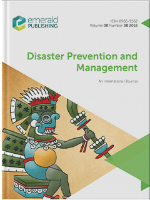
Disaster Prevention and Management
Scope & Guideline
Transforming theory into practice for disaster prevention.
Introduction
Aims and Scopes
- Interdisciplinary Research:
The journal emphasizes the importance of interdisciplinary approaches, integrating insights from various fields such as sociology, environmental science, urban planning, and public health to address complex disaster-related challenges. - Community Engagement:
A core focus is on participatory methodologies that involve affected communities in disaster research and management, highlighting the voices and experiences of marginalized groups, including Indigenous peoples and individuals with disabilities. - Policy and Governance:
The journal explores the dynamics of disaster governance, policy implementation, and the effectiveness of disaster risk management frameworks at local, national, and international levels. - Innovative Methodologies:
There is a strong emphasis on innovative research methodologies, including participatory action research, photovoice, and critical reflexivity, to enhance the understanding of disaster experiences and improve DRR efforts. - Social and Environmental Justice:
The journal addresses issues of social justice and equity in disaster risk reduction, focusing on how different social groups are affected by disasters and the need for inclusive practices in disaster management.
Trending and Emerging
- Indigenous Knowledge and Perspectives:
There is a growing trend towards incorporating Indigenous knowledge systems and perspectives in disaster risk reduction, recognizing their value in understanding local vulnerabilities and enhancing community resilience. - Intersectionality and Vulnerability:
Research is increasingly focusing on the intersectionality of social identities and how they influence vulnerability to disasters, particularly examining gender, race, and socio-economic factors in disaster contexts. - Participatory Action Research:
The use of participatory action research methodologies is on the rise, emphasizing collaborative engagement with affected communities to co-create knowledge and solutions for disaster risk reduction. - Climate Change and Environmental Disasters:
There is an emerging focus on the interplay between climate change and disaster risk, exploring how environmental degradation exacerbates vulnerabilities and impacts recovery efforts. - Ethics and Reflexivity in Disaster Research:
An increasing emphasis on ethical considerations and reflexivity in disaster research is evident, with scholars advocating for more responsible and inclusive research practices that consider the implications of their work on vulnerable populations.
Declining or Waning
- Traditional Disaster Response Models:
There is a noticeable decline in research centered on conventional disaster response models, as the field increasingly recognizes the necessity for adaptive, community-centered approaches that prioritize resilience and recovery. - Overemphasis on Technological Solutions:
Research focusing solely on technological solutions for disaster risk management has waned, with a growing recognition that human and social dimensions are crucial for effective disaster prevention and recovery. - Disaster Management as a Linear Process:
The perception of disaster management as a linear process is declining, as recent studies emphasize the complexity and interconnectedness of disaster phases, advocating for more dynamic and iterative approaches.
Similar Journals

International Journal of Disaster Risk Science
Pioneering research for a resilient future in disaster science.The International Journal of Disaster Risk Science, with ISSN 2095-0055 and E-ISSN 2192-6395, is a premier, peer-reviewed open-access journal published by Springer. Since its inception in 2011, the journal has been dedicated to advancing knowledge and practice in the field of disaster risk science, facilitating critical discussions around disaster preparedness, response, and resilience across various regions of the globe. This journal holds impressive rankings, including Q1 in Geography, Planning and Development, and Q1 in Safety Research for 2023, confirming its high impact within the academic community. With converged publication years from 2010 to 2024 and being ranked in the top 10% in multiple categories, it serves as an essential resource for researchers, professionals, and students alike. As an open-access journal, it ensures that cutting-edge research is freely available, promoting wider dissemination and engagement with topical issues in disaster risk management.

Australian Journal of Emergency Management
Empowering communities with essential knowledge.The Australian Journal of Emergency Management, published by the Australian Emergency Management Institute, is a pivotal resource in the field of emergency management, public health, and safety research. With a history dating back to 1998 and a convergence period extending to 2024, this journal actively contributes to advancing knowledge and practice in emergency medical services and related areas. Holding strong positions in both the Q2 and Q3 quartiles of 2023 rankings, it stands out within its categories, particularly in Health Professions and Safety Research. While it is not an open-access journal, it provides essential insights and empirical research that are invaluable for researchers, professionals, and students alike. Located in East Melbourne, Australia, the journal ensures that critical advancements in emergency management and health are highly accessible to its global audience, fulfilling its mission to promote informed decision-making and improve community resilience during crises.

Progress in Disaster Science
Leading the Charge in Disaster Resilience ResearchProgress in Disaster Science, published by ELSEVIER, is a prestigious open-access journal that has been advancing the field of disaster research since its inception in 2019. With an ISSN of 2590-0617, the journal has quickly established itself as a leading resource, recognized for its impact across various related disciplines, as evidenced by its impressive Q1 rankings in 2023 in categories such as Earth and Planetary Sciences, Environmental Science, Geography, Planning and Development, and Safety Research. This journal publishes cutting-edge research that aims to enhance understanding and management of disaster risks, resilience, and recovery processes. Additionally, the journal's accessibility ensures that important findings are disseminated widely, fostering collaboration among researchers, professionals, and students globally. Positioned under the umbrella of critical environmental and safety insights, Progress in Disaster Science plays a pivotal role in shaping the discourse surrounding disaster management and preparedness in today's rapidly changing world.
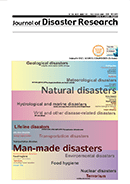
Journal of Disaster Research
Connecting research and policy for enhanced disaster preparedness.Journal of Disaster Research, published by FUJI TECHNOLOGY PRESS LTD, is a prominent Open Access journal that has been disseminating critical research on disaster management since its inception in 2007. Focusing on the interrelated fields of engineering and safety, the journal aims to advance knowledge and policy in disaster risk reduction, response, and resilience, making it an essential resource for researchers, practitioners, and policymakers alike. With an ISSN of 1881-2473 and E-ISSN 1883-8030, the journal covers a wide range of topics related to disaster studies, ensuring the dissemination of innovative solutions and diverse perspectives. Situated in Japan, the journal has been ranked Q3 in both Engineering (Miscellaneous) and Safety, Risk, Reliability, and Quality categories, showcasing its commitment to quality scholarship. As it converges its research contributions from 2006 to 2024, the Journal of Disaster Research continues to serve as a vital platform for advancing the science and practice of disaster research, thereby enhancing societal resilience against crises.

NATURAL HAZARDS
Exploring innovative solutions for disaster resilience.NATURAL HAZARDS is a premier academic journal published by SPRINGER that focuses on the multidimensional aspects of natural hazards, their impacts, and mitigation strategies. With a robust impact factor and esteemed rankings in reputable databases such as Scopus, this journal is classified in the Q2 category in Atmospheric Science and Q1 in both Earth and Planetary Sciences (miscellaneous) and Water Science and Technology, showcasing its influence in these critical fields. Established in 1988 and continuing through 2024, it serves as a vital resource for researchers, professionals, and students alike, providing cutting-edge research and insights into the dynamics of natural hazards. Although it does not offer open-access options, the journal is accessible through institutional subscriptions, ensuring that high-quality research is disseminated efficiently to those dedicated to advancing our understanding of environmental challenges. By publishing empirical studies, theoretical analyses, and case studies, NATURAL HAZARDS plays a crucial role in informing disaster management policies and strategies, thereby contributing to a safer, more resilient world.

Risk Hazards & Crisis in Public Policy
Illuminating pathways to effective crisis management.Risk Hazards & Crisis in Public Policy is a leading academic journal published by WILEY, focusing on the interdisciplinary study of risks and crises as they pertain to public policy. Since its inception in 2010, this journal has established itself prominently in the field, currently holding a Q2 quartile ranking in Public Administration and boasting an impressive Scopus percentile of 89, ranking it 24 out of 232 journals in its category. This demonstrates its significant influence and relevance among peer-reviewed publications. The journal serves as a critical platform for researchers, policymakers, and practitioners to share innovative research, insightful analyses, and practical solutions related to the management and mitigation of risks in public administration. Although it does not currently offer open access options, it continues to provide vital insights into burgeoning issues within the domain, making it an essential resource for anyone interested in advancing their understanding of risk management in public policy contexts.
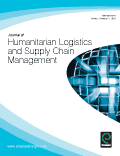
Journal of Humanitarian Logistics and Supply Chain Management
Championing efficiency in the face of disaster challenges.Journal of Humanitarian Logistics and Supply Chain Management is a premier academic journal published by Emerald Group Publishing Ltd that addresses the critical intersection of logistics and supply chain management within humanitarian contexts. With an ISSN of 2042-6747 and an E-ISSN of 2042-6755, this journal has established itself as a leading resource for researchers, professionals, and students dedicated to enhancing operational efficiency and effectiveness in disaster relief and humanitarian aid. The journal enjoys a distinguished standing with a Q1 ranking in Management Information Systems and a Q2 ranking in Management Science and Operations Research, reflecting its contributions to the field and its significant impact factor, placing it in the 75th percentile among its peers in Scopus rankings. Covering a spectrum of topics from innovative supply chain strategies to responsive logistics frameworks, the Journal of Humanitarian Logistics and Supply Chain Management provides valuable insights and practical solutions that are essential for enhancing resilience and responsiveness in humanitarian operations as it converges through the years from 2011 to 2024. Researchers and industry practitioners alike are encouraged to engage with its robust articles, fostering collaboration and knowledge exchange to meet the evolving challenges faced in humanitarian logistics.
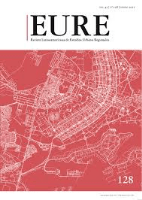
EURE-REVISTA LATINOAMERICANA DE ESTUDIOS URBANO REGIONALES
Enhancing Discourse on Urban Development and PolicyEURE-REVISTA LATINOAMERICANA DE ESTUDIOS URBANO REGIONALES, published by the Pontificia Universidad Católica de Chile, is a pivotal journal in the field of Urban Studies, focusing on the complexities and dynamics of urban and regional environments across Latin America. Since its inception in 1979 and transitioning to an open-access format in 1997, this journal aims to provide a platform for scholars, policymakers, and practitioners to share innovative research and insights on urban development, policy, and sustainability. With an impact factor robust enough to rank it in the Q2 category within Urban Studies and a Scopus rank of #124 out of 279, EURE stands out as a significant contributor to understanding urban phenomena in the region. Researchers and students alike will find in this journal a wealth of empirical studies, theoretical discussions, and case analyses, enriching the discourse on urban challenges and opportunities in contemporary Latin America.
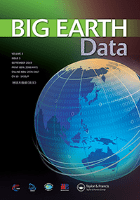
Big Earth Data
Shaping Tomorrow's Earth Science with Cutting-Edge Data AnalyticsBig Earth Data is a prestigious open-access journal that has been at the forefront of advancing research in the intersection of earth science and computer technology since its inception in 2017. Published by TAYLOR & FRANCIS LTD in the United Kingdom, this journal is dedicated to disseminating groundbreaking findings and innovative methodologies in the fields of Earth and Planetary Sciences and Computer Science Applications. With a commendable impact factor and an impressive positioning in the Scopus rankings—claiming Q1 status in Computers in Earth Sciences and Q2 in Computer Science Applications—it serves as a vital resource for researchers, professionals, and students alike. The journal encourages submissions that explore the integration of big data technologies in managing, analyzing, and visualizing earth-related data, thereby fostering interdisciplinary collaboration. Since embracing its open-access model, Big Earth Data has enhanced the accessibility of high-quality research, promoting a broader dialogue in the scientific community and contributing to informed decision-making in global environmental challenges.
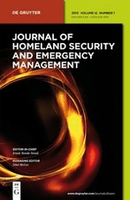
Journal of Homeland Security and Emergency Management
Championing Research for a Secure TomorrowJournal of Homeland Security and Emergency Management, published by Walter de Gruyter GmbH in Germany, is a leading platform for scholarly research dedicated to the critical fields of security and emergency management. With an impressive impact factor reflecting its high-quality publications, this journal plays an essential role in advancing knowledge within its scope that covers vital issues such as disaster preparedness, risk assessment, and organizational resilience. The journal's Scopus rankings highlight its distinguished standing, being in the top quartile for Safety Research and demonstrating significant impact across various fields including Business Management and Safety, Risk, Reliability, and Quality. Researchers, professionals, and students alike can access a wealth of information as this open-access journal from 2004 to 2024 is committed to disseminating critical insights and innovative practices essential for effective homeland security and emergency management strategies.